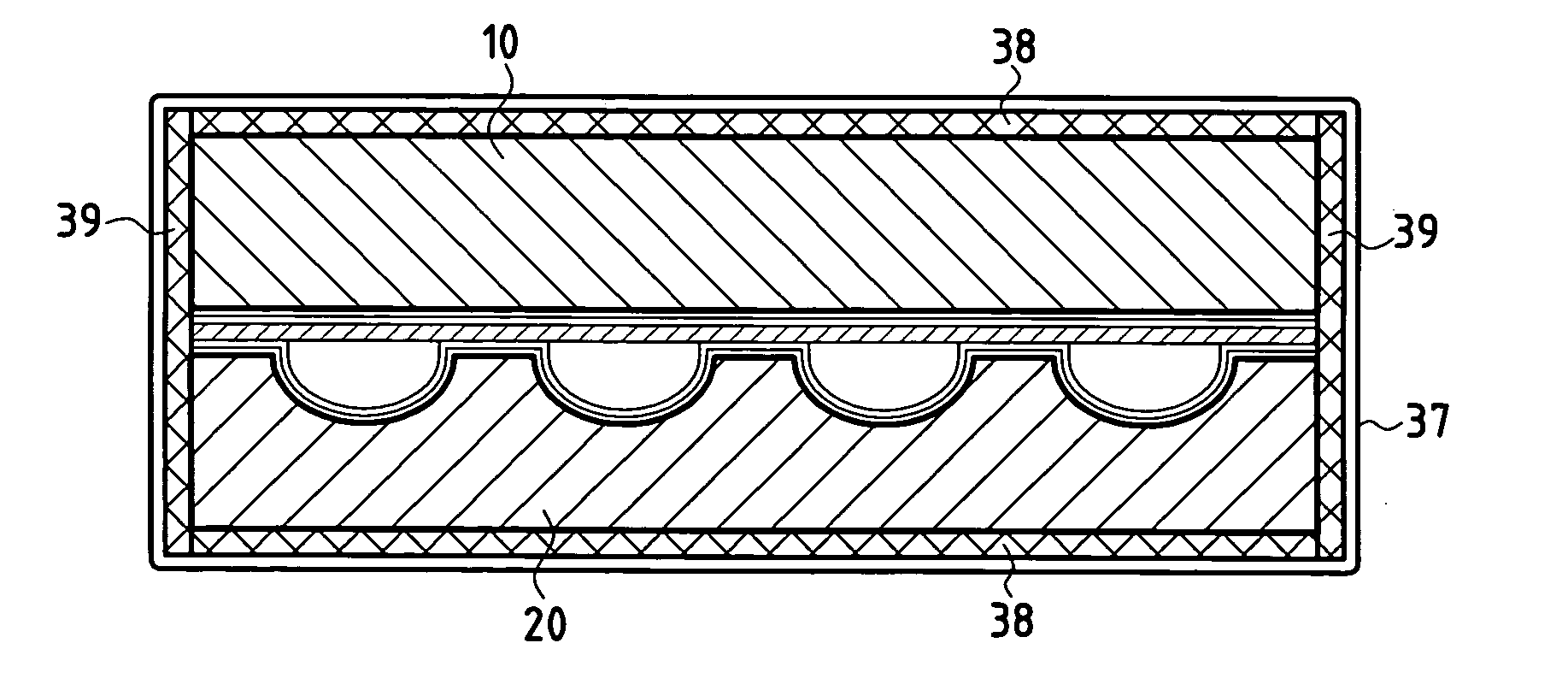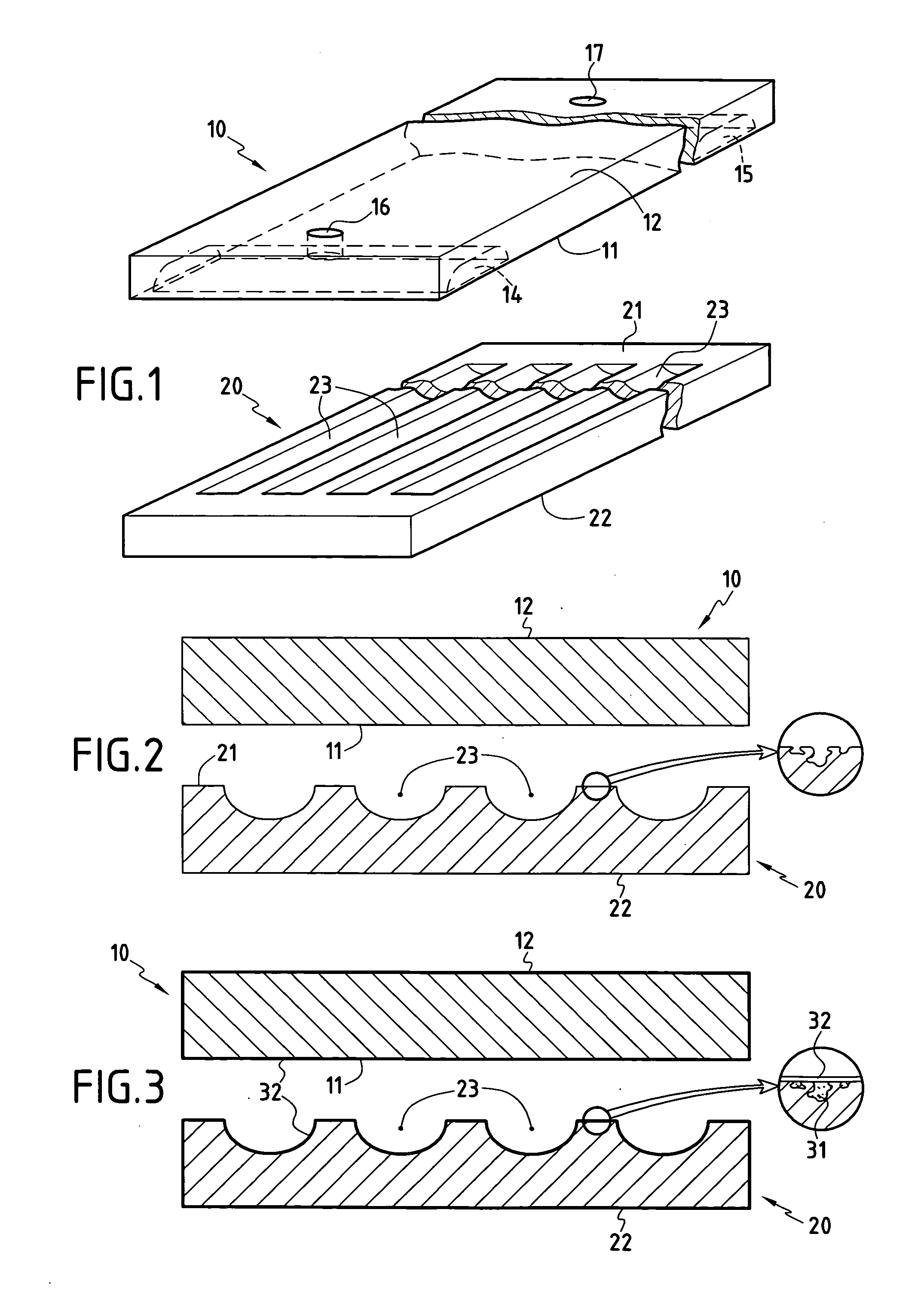Method of manufacturing an active cooling panel out of thermostructural composite material
a technology active cooling panels, which is applied in the direction of lighting and heating apparatus, combustion process, soldering media, etc., can solve the problems of limiting the capacity to cool the exposed surface, unsuitable for use on its own, and residual porosity of thermostructural composite materials, so as to achieve the effect of effective and durabl
- Summary
- Abstract
- Description
- Claims
- Application Information
AI Technical Summary
Benefits of technology
Problems solved by technology
Method used
Image
Examples
example
[0083] Parts 10 and 20 similar to those shown in FIG. 1 were made of C / SiC thermostructural composite material, with the channels and the manifolds being formed by machining.
[0084] The porosity of the inside surfaces of the parts was reduced by brushing onto them a composition containing an SiC powder of mean grain size equal to about 9 microns (μm) in a PCS solution in xylene. After drying in air, the PCS was cross-linked at about 350° C. and then transformed into SiC by raising the temperature to about 900° C. A thin coating of SiC having thickness of about 100 μm was then deposited by chemical vapor infiltration, with the coating then being formed over the entire outside surface of each of the parts 10, 20 and not only over the inside faces of the parts. In combination with the residue of ceramizing the PCS associated with the SiC powder, the SiC coating contributes to achieving an effective reduction of porosity.
[0085] Metal deposits of rhenium and then of nickel were formed i...
PUM
| Property | Measurement | Unit |
|---|---|---|
| temperature | aaaaa | aaaaa |
| temperature | aaaaa | aaaaa |
| thickness | aaaaa | aaaaa |
Abstract
Description
Claims
Application Information
 Login to View More
Login to View More - R&D
- Intellectual Property
- Life Sciences
- Materials
- Tech Scout
- Unparalleled Data Quality
- Higher Quality Content
- 60% Fewer Hallucinations
Browse by: Latest US Patents, China's latest patents, Technical Efficacy Thesaurus, Application Domain, Technology Topic, Popular Technical Reports.
© 2025 PatSnap. All rights reserved.Legal|Privacy policy|Modern Slavery Act Transparency Statement|Sitemap|About US| Contact US: help@patsnap.com



